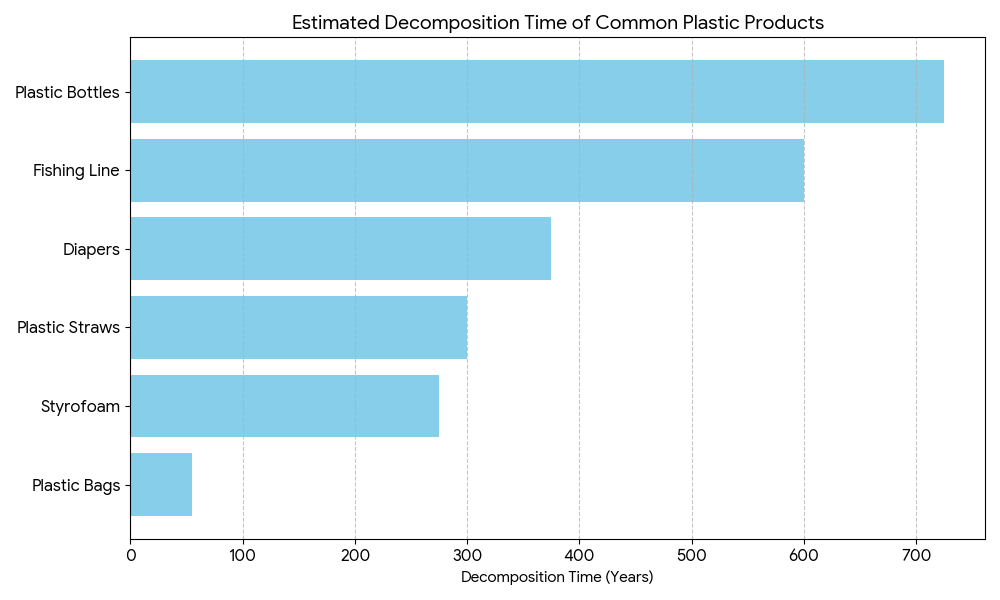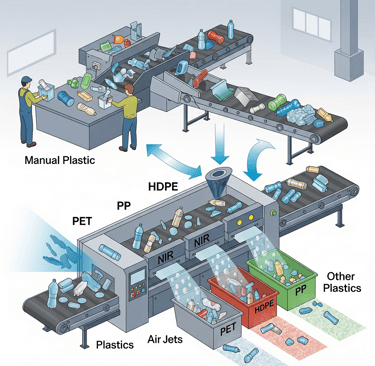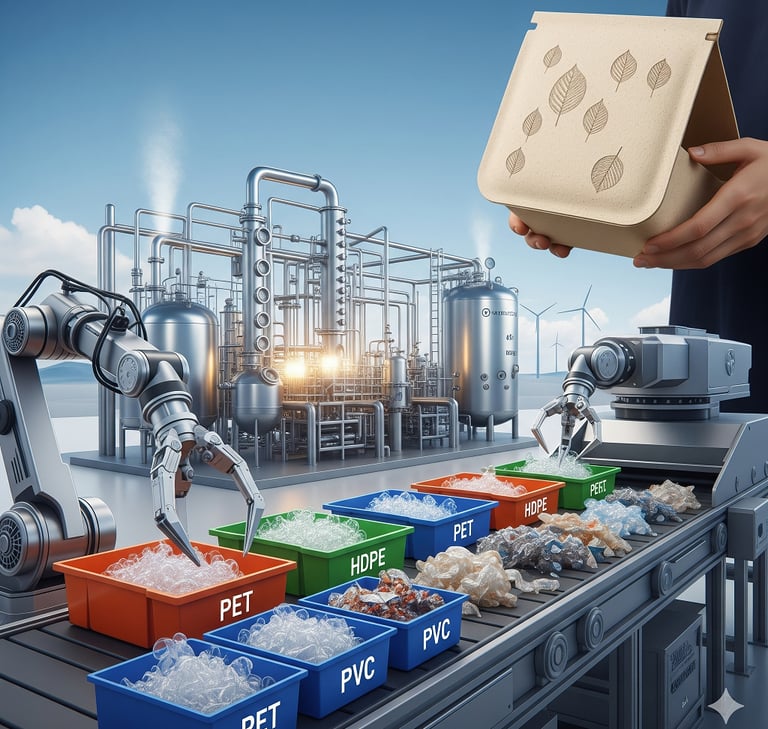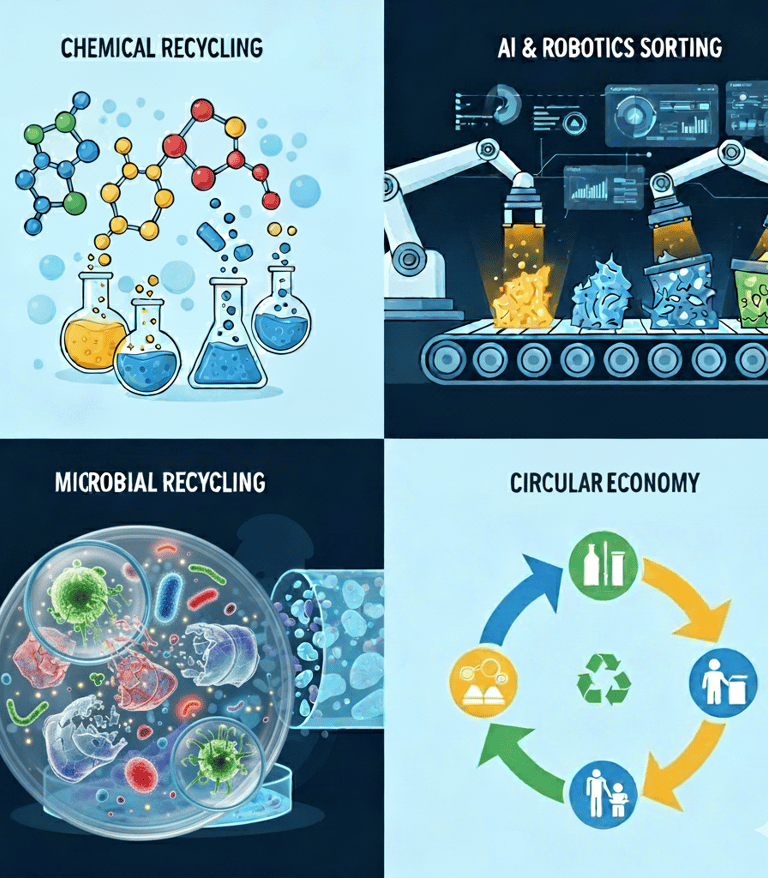The Future of Plastic: Innovations in a Circular Economy
Take, Make, Use, Dispose
Mr.Ranjithkumar Arjunan, EGF India
9/8/20255 min read
A key environmental challenge today is plastic waste, which impacts our planet and takes an incredibly long time to break down.
1. Types of Plastic and Their Environmental Impact
Plastic is categorized into seven main types, each with unique properties and recycling challenges:
PET (Polyethylene Terephthalate): Commonly used for beverage bottles and food containers. It is widely recycled, but if it enters the environment, it can take centuries to decompose.
HDPE (High-Density Polyethylene): Found in milk jugs, detergent bottles, and some pipes. It is durable and one of the easiest plastics to recycle.
PVC (Polyvinyl Chloride): Used for window frames, wire insulation, and drainage pipes. It is rarely recycled due to the difficulty of the process and the harmful toxins it can release.
LDPE (Low-Density Polyethylene): A thin, flexible plastic used for shopping bags and cling film. It is difficult to recycle and often tangles in machinery at recycling facilities.
PP (Polypropylene): Used for yogurt cups, bottle caps, and some food containers. It is heat-resistant and durable, but its recycling is not as widespread as PET or HDPE.
PS (Polystyrene): The plastic used for disposable cups and packing peanuts (Styrofoam). It's difficult to recycle and can leach harmful chemicals when heated.
Other: This category includes a variety of other plastics, such as polycarbonate, which are generally difficult to recycle.


2. Decomposition Time of Plastic
Unlike natural materials, plastic does not biodegrade. It photodegrades, meaning it breaks into smaller and smaller pieces over time, but it never truly disappears. The decomposition time varies greatly by the type of plastic and environmental conditions.
Plastic waste impacts the environment by polluting oceans, rivers, and land. It harms wildlife through ingestion and entanglement, and breaks down into microplastics and nanoplastics, which have been found in every ecosystem on Earth, including our food and water supply. The production of plastic from fossil fuels also contributes to greenhouse gas emissions and climate change.
The following graph shows the estimated time it takes for some common plastic items to decompose:


3. Plastic Waste Collection and Recycling
The process of collecting and recycling plastic waste involves several key steps.
Collection: Plastic waste is collected from homes, businesses, and public spaces, often through a two-stream system where recyclables are separated from general waste.
Sorting: Collected materials are sent to Material Recovery Facilities (MRFs). Here, both manual labor and automated technology, such as sensor-based and density-based separators, sort plastics by type.
Processing: There are three main methods for recycling plastics:
Mechanical Recycling: This is the most common method. The plastic is sorted, cleaned, shredded into flakes, melted, and then formed into pellets to be used in the manufacturing of new products. However, the quality of the plastic degrades with each cycle, a process known as "downcycling".
Chemical Recycling: This advanced method uses heat or chemicals to break down the plastic polymers into their original building blocks (monomers), which can then be re-polymerized into new, high-quality plastic.
Energy Recycling: This method involves incinerating plastic waste to generate energy. While it reduces landfill waste, it releases greenhouse gases and is generally considered a less sustainable option than mechanical or chemical recycling.


4.Challenges of Plastic Recycling
Despite its importance, plastic recycling faces significant hurdles that limit its effectiveness:
Complexity of Plastic Types: There are numerous types of plastic, each with different chemical compositions and properties. Many products combine multiple types of plastic, which makes sorting and reprocessing very difficult.
Contamination: Contamination from food residue, labels, and other materials significantly lowers the quality of recycled plastic, making it unsuitable for many applications.
Economic Barriers: Often, the cost of collecting, sorting, and processing recycled plastic is higher than producing new, or "virgin," plastic from raw materials like oil.
Lack of Infrastructure and Awareness: Many regions lack the proper infrastructure for efficient plastic waste collection and sorting. Additionally, a lack of public awareness about proper recycling practices further complicates the process.
5.Innovations in Plastic Waste Management
Chemical Recycling: Unlike traditional mechanical recycling that melts and reshapes plastic, chemical recycling breaks down plastics into their basic molecular components. This allows for the recycling of plastics that were previously considered "un-recyclable," such as mixed or contaminated plastics. Examples include pyrolysis, which converts plastic into usable fuel, and depolymerization, which breaks down plastics into their original building blocks to create new products.
Advanced Sorting Technologies: The use of Artificial Intelligence (AI) and robotics is revolutionizing the sorting process. AI-powered systems can accurately identify and separate different types of plastic, significantly improving efficiency and purity.
Microbial and Enzymatic Recycling: Scientists are developing special enzymes and microbes that can "eat" plastic, breaking it down at an accelerated rate. This method is highly energy-efficient and can target specific types of plastic.
The Circular Economy: This is a broad economic model that aims to eliminate waste and pollution by keeping products and materials in use for as long as possible. For plastics, this means redesigning products to be easily reusable and recyclable, and creating systems to ensure all plastic items are circulated back into the economy rather than ending up in landfills or the environment. This approach is being promoted through policies like Extended Producer Responsibility (EPR), which holds manufacturers accountable for the entire lifecycle of their products, including their disposal.




Conclusion
The transition from a linear to a circular economy is not just an ideal—it's an urgent necessity for the future of plastic. While the traditional model of "take, make, use, dispose" has driven economic growth, it has also created a global plastic waste crisis. Innovations in advanced recycling, from chemical recycling to AI-powered sorting, are providing the technological breakthroughs needed to keep plastic in circulation.
Ultimately, a truly circular system will not only minimize waste and pollution but also decouple plastic production from finite resources like fossil fuels. This comprehensive shift requires a collective commitment from policymakers, businesses, and individuals to embrace new technologies, rethink product design, and prioritize reuse over single-use. The future of plastic is not about its elimination, but its transformation into a perpetually valuable resource within a sustainable economic model.
